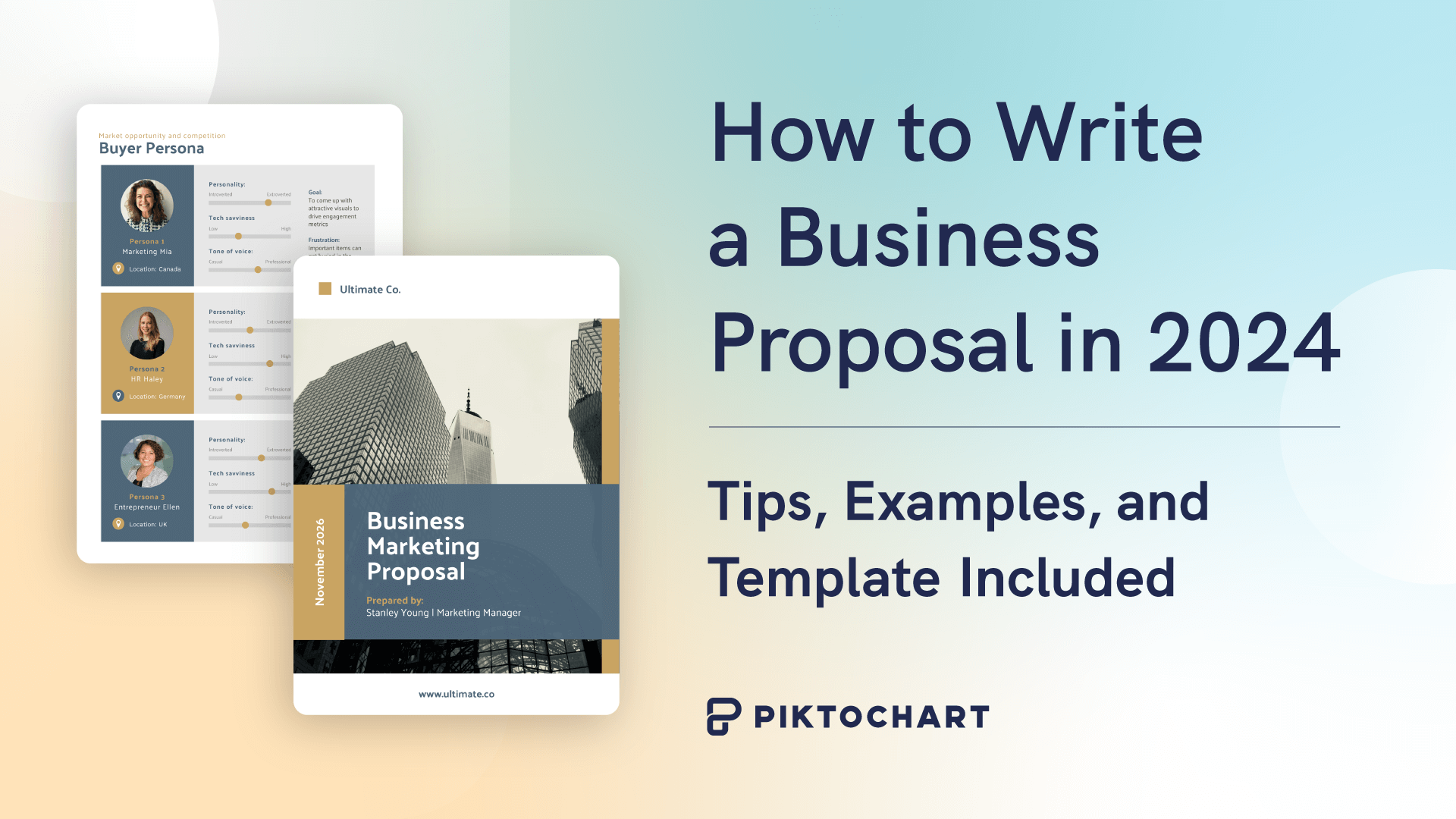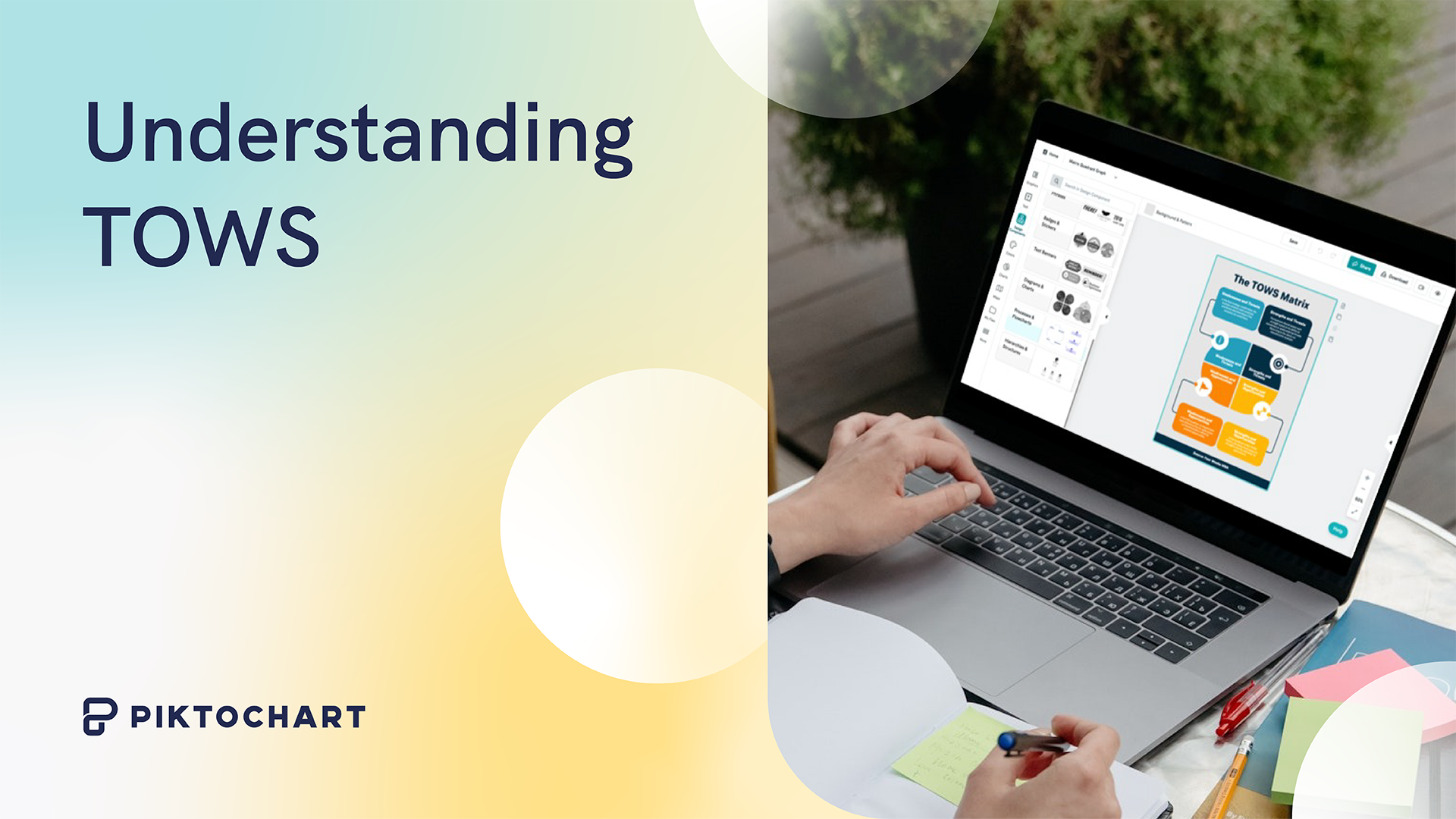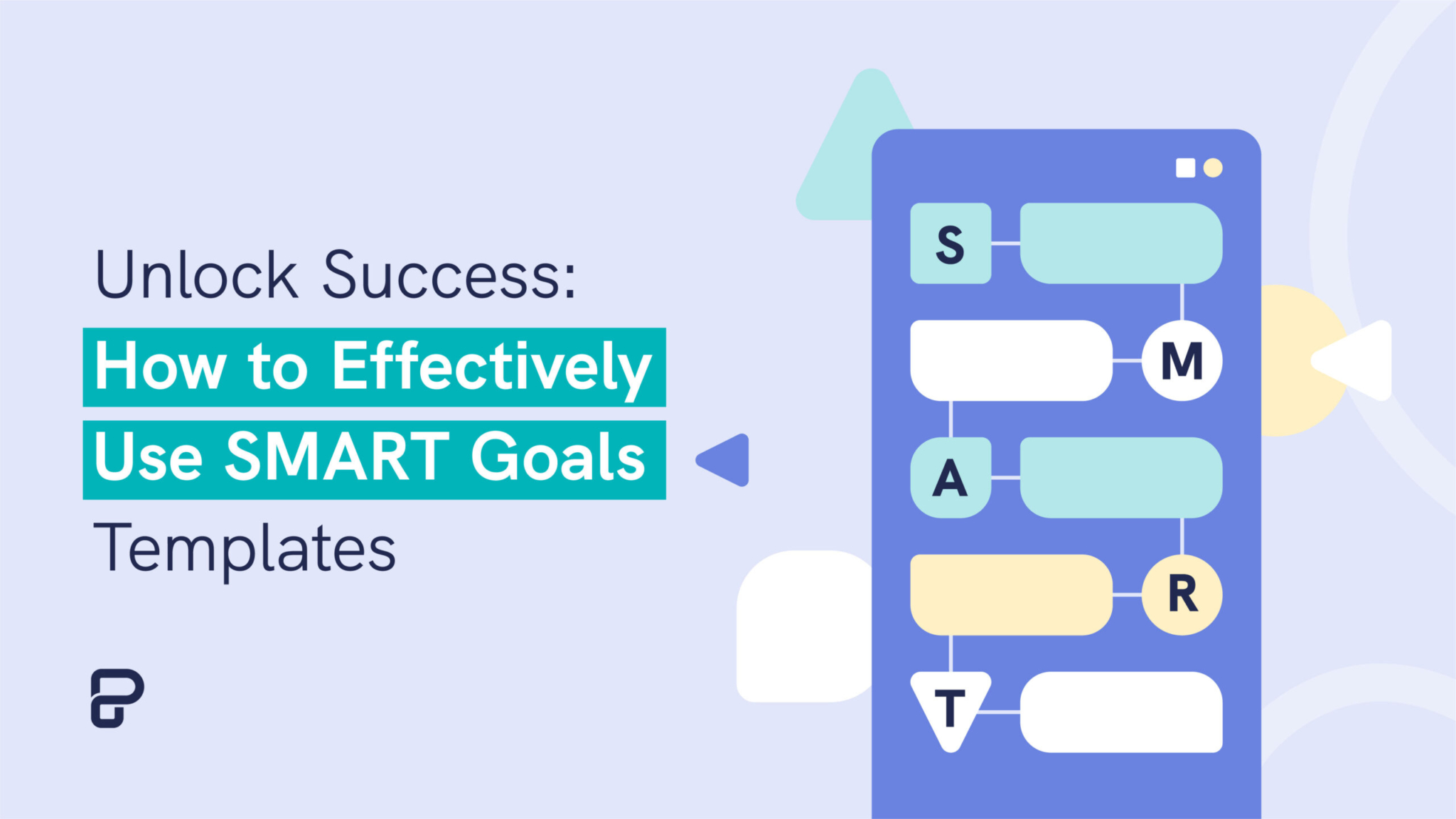Whether you’re an entrepreneur pitching new clients, an established company expanding your offerings, or a consultant proposing a project, a well-crafted proposal is essential for success.
In this comprehensive guide, we’ll walk you through the steps of creating an effective, modern business proposal that showcases your expertise and persuades potential clients to pick your services over your competitors.
What is a Business Proposal?
A business proposal is a formal document that outlines the products, services, or projects a company offers to potential clients or partners. The primary goal is to persuade the recipient that your solution is the best fit for their needs. Business-to-business (B2B) companies commonly use proposals to secure new contracts and grow their customer base.
It’s important to note that a business proposal is different from a business plan. While a business plan provides a structured overview of a company’s objectives and strategies, a proposal focuses specifically on selling a product or service to another business. The components and level of detail in a proposal can vary depending on the industry, company size, and the specific project requirements.
When Do You Need a Business Proposal?
There are two main scenarios where you might need to write a business proposal:
Unsolicited Proposals
An unsolicited proposal is one that you send to a potential client without them requesting it. This type of proposal is similar to a cold email or marketing brochure, aiming to generate interest in your offerings.
Unsolicited proposals tend to be more generic, as you might not have in-depth knowledge of the recipient’s specific needs. However, by conducting market research and identifying common pain points within your target industry, you can tailor your proposal to address those challenges.
Solicited Proposals
A solicited proposal is one that you create in response to a request from a potential client. This request is often in the form of a Request for Proposal (RFP), which outlines the client’s requirements and asks for bids from various vendors.
Solicited proposals are usually more customized to the client’s specific needs, as you have access to detailed information about their project and expectations. In this case, your goal is to demonstrate how your solution aligns with their stated requirements and offers unique value compared to your competitors.
Structure and Components of a Business Proposal
While the exact structure of a business proposal can vary, most successful proposals include the following key components:
Title Page
Your title page is the first impression your potential client will have of your proposal. It should include your company name and logo, the client’s name, the date, and a compelling title that summarizes your proposed solution.
Keep the design clean, professional, and aligned with your brand guidelines.
Table of Contents
For longer proposals, include a table of contents to help the reader navigate the document easily. List the main sections and their corresponding page numbers. If you’re sending your proposal electronically, consider making the table of contents clickable for quick access to each section.

Executive Summary
The executive summary is a concise overview of your entire proposal, highlighting the key points and value proposition. It should grab the reader’s attention and persuade them to read the full proposal. Aim for one to two paragraphs that succinctly answer the following questions:
- Who are you, and what does your company do?
- What problem or need does the client have?
- What is your proposed solution?
- Why are you the best choice for the job?
Here is an example executive summary.
Problem Statement
In this section, clearly describe the client’s current challenges and the impact those problems have on their business. Demonstrate your understanding of their situation and set the stage for your proposed solution. Use specific examples and data to illustrate the severity of the problem and the need for action.
Here’s an example of a healthcare company sharing the rising cost of health in the US as the problem statement.
Proposed Solution
Here’s where you outline your recommended approach to solving the client’s problem. Provide a high-level overview of your solution, focusing on the key strategies and deliverables. Break down your plan into clear, actionable steps, and highlight the unique benefits your solution offers.
Qualifications and Expertise
In this section, highlight your company’s relevant experience, skills, and qualifications that make you the best choice for the project. Include information about your team’s background, notable achievements, and any specialized knowledge or certifications. If possible, provide case studies or examples of similar projects you’ve successfully completed in the past.
Timeline and Milestones
Provide a clear timeline of when and how you will complete the proposed work. Break down the project into key milestones and deliverables, with estimated completion dates for each. Use a visual aid, such as a Gantt chart or timeline infographic, to make the information easy to digest at a glance.
Pricing and Budget
Be transparent about your pricing structure and provide a detailed breakdown of the costs associated with your proposed solution. Include information about any recurring fees, payment schedules, and terms. If applicable, present different pricing tiers or packages to give the client options that fit their budget.
It doesn’t have to be that complicated, either. A simple table that breaks down your pricing structure makes it easier for your clients to consider your proposal and compare against other proposals.
Why Choose Us?
Summarize the key reasons why the client should choose your company over competitors. Reiterate your unique value proposition, relevant experience, and commitment to the client’s success. This is your final chance to make a persuasive case for your solution.
Example:
Choosing the right social media marketing partner is a critical decision for your business. At Social Boost Marketing, we differentiate ourselves in the following ways:
Case Studies and Testimonials
Including case studies or testimonials from satisfied clients can be a powerful way to build trust and credibility with potential customers. Share specific examples of how you’ve helped similar businesses achieve their goals, and let your clients’ words speak to the quality of your work.
Next Steps
End your proposal with a clear call-to-action, outlining the next steps for the client to take if they want to move forward with your solution. Make it easy for them to get in touch with you and provide any necessary information or documents they need to make a decision.
Tips for an Effective Business Proposal
Now that you understand the key components of a winning business proposal, let’s discuss some best practices to make your proposal stand out from the competition.
1. Know your audience
Before you start writing, take the time to research your potential client and understand their unique needs, challenges, and goals. The more you can tailor your proposal to their specific situation, the more effective it will be.
2. Focus on benefits, not just features
While it’s important to describe what your solution includes, don’t forget to highlight the benefits it will deliver for the client. Explain how your approach will solve their problems, make their life easier, or help them achieve their objectives.
3. Use clear formatting and visuals
A well-organized, visually appealing proposal is more likely to hold your reader’s attention and communicate your message effectively. Use headings, subheadings, bullet points, and plenty of white space to break up the text and make it easy to scan.
Incorporating relevant visuals, such as charts, graphs, and images can also help illustrate your points and make your proposal more engaging. Consider using a tool like Piktochart to create professional-looking infographics that showcase your data and key insights in a compelling way.
4. Keep it concise and tailored
While it’s important to include all the necessary information, avoid overwhelming your reader with irrelevant details or long-winded explanations. Keep your writing clear, concise, and focused on what matters most to the client. If you need to provide additional background information or technical specifications, consider including them as an appendix rather than in the main body of the proposal.
5. Highlight measurable results and ROI
Ultimately, your potential client wants to know how your solution will impact their bottom line. Be sure to include specific, measurable outcomes they can expect from working with you, such as increased sales, cost savings, or improved efficiency. Use case studies or examples from previous clients to demonstrate the tangible results you’ve delivered in similar situations.
6. Proofread thoroughly
Nothing undermines your credibility faster than a proposal filled with typos, grammatical errors, or inconsistent formatting. Before you submit your proposal, take the time to review it carefully for any mistakes or awkward phrasing. Consider asking a colleague or professional editor to provide a second set of eyes and catch any errors you may have missed.
7. Follow up and be responsive
Once you’ve submitted your proposal, don’t just sit back and wait for a response. Follow up with the client to ensure they received it and ask if they have any questions or need any additional information. Be prompt and professional in your communication, and make it clear that you’re available to discuss the proposal further or provide clarification as needed.
By following these tips and best practices, you’ll create a polished, persuasive business proposal that sets you apart from the competition and increases your chances of winning the project.
Invest in Design with a Powerful Proposal Template
By now, you’ve seen how polished visuals play a vital role in making your business proposal more engaging, persuasive and memorable. But let’s face it – not everyone is a natural-born designer. Even finding the time to customize graphics for every new pitch can be a challenge when you’re busy serving clients.
That’s where professional proposal templates can be a major asset. By investing in a master template optimized for impact, clarity and flow, you can elevate every future proposal with just a few clicks. The key is choosing a template platform that offers:
Streamlined Customization
Look for cloud-based software that makes it easy to add your own logo, colors, images and copy without starting from scratch. Drag-and-drop builders and WYSIWYG editors can be a big timesaver.
Collaboration Features
Chances are you’ll need feedback from multiple internal stakeholders like Sales, Marketing, Product and Finance before finalizing each proposal. Choose a tool built for seamless collaboration, with options to add comments, assign tasks, and control access.
Interactive Viewing
Gone are the days of sending prospects a static PDF. Modern proposal platforms allow clients to engage with your content directly, clicking on links, watching videos, and e-signing agreements. Look for analytics features too, so you can track views and follow up accordingly.
Ready-Made Designs
The best proposal tools have extensive template libraries with gorgeous graphics already embedded. Ideal if you don’t have the bandwidth to commission custom illustrations and layouts for each pitch. Just make sure the visual styles match your brand identity.
Mobile-Friendly Layouts
With over 50% of buyers now reading proposals on smartphones, mobile optimization is a must. Check that your chosen template looks great on any device, without wonky image sizing or cut-off text. Responsive design is non-negotiable.
The Bottom Line: A Winning Proposal Blends Substance and Style
By structuring your pitch around a client-centric narrative – problem, solution, proof – you can ensure your message always maps back to their top priorities. Keeping the client front and center as you visualize each section of your proposal will yield graphics that don’t just look nice, but provide real insight and value.
Of course, all of this customization takes time, especially when you’re managing a hefty RFP pipeline. So don’t hesitate to leverage productivity tools like proposal templates, content libraries, and e-signature software to streamline your efforts without sacrificing quality. The more you can systematize winning proposal creation, the more capacity you’ll have to focus on tailoring your approach.
Ultimately, a standout proposal is one that threads the needle between substance and style. It marries a rock-solid solution with engaging, digestible design to educate and persuade. It anticipates questions, inspires confidence, and makes it easy to say “yes.” And most importantly, it opens the door to a lasting client relationship built on trust, creativity and shared success.
So the next time you’re staring down a high-stakes RFP, don’t fear the blank page. Follow the tips in this guide to develop a visually powerful proposal that positions you as the obvious choice. Your ideas have the potential to transform client challenges into their competitive edge. A well-designed proposal is your opportunity to prove it.









